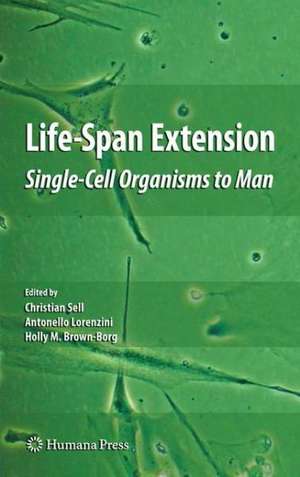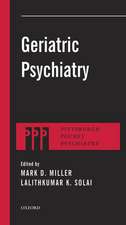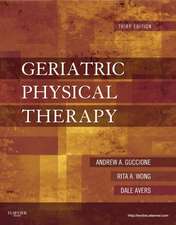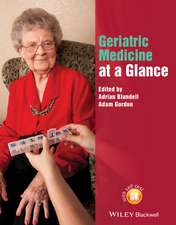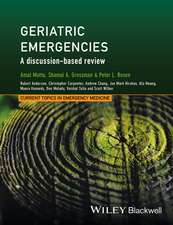Life-Span Extension: Single-Cell Organisms to Man: Aging Medicine
Editat de Christian Sell, Antonello Lorenzini, Holly M. Brown-Borgen Limba Engleză Paperback – 25 feb 2012
Single mutations that extend life span have been identified in yeast, worms, flies, and mice, whereas studies in humans have identified potentially important markers for successful aging. At the same time, it has been discovered that the genes and pathways identified in these studies involve a surprisingly small set of conserved functions, most of which have been the focus of aging research for some time. For example, the mTOR pathway, a regulator of translation and protein synthesis, has been identified as a common longevity pathway in yeast and Caenorhabditis elegans. In mammals, this pathway intersects with neuroendocrine pathways and with the insulin/insulin-like growth factor pathways, which have been identified as major modulators of life span and aging in both invertebrates and mice.
Novel, emerging technologies and the increasingly wide variety of systems that are now used to study aging and the mechanisms of aging provide enormous opportunities for the identification of common pathways that modulate longevity. It is these common pathways that are the focus of this important volume.
| Toate formatele și edițiile | Preț | Express |
|---|---|---|
| Paperback (1) | 774.60 lei 6-8 săpt. | |
| Humana Press Inc. – 25 feb 2012 | 774.60 lei 6-8 săpt. | |
| Hardback (1) | 1098.48 lei 6-8 săpt. | |
| Humana Press Inc. – 25 aug 2009 | 1098.48 lei 6-8 săpt. |
Preț: 774.60 lei
Preț vechi: 815.37 lei
-5% Nou
Puncte Express: 1162
Preț estimativ în valută:
148.24€ • 160.96$ • 124.52£
148.24€ • 160.96$ • 124.52£
Carte tipărită la comandă
Livrare economică 22 aprilie-06 mai
Preluare comenzi: 021 569.72.76
Specificații
ISBN-13: 9781617797477
ISBN-10: 1617797472
Pagini: 216
Ilustrații: XVIII, 198 p. 25 illus., 5 illus. in color.
Dimensiuni: 155 x 235 x 11 mm
Greutate: 0.31 kg
Ediția:2009
Editura: Humana Press Inc.
Colecția Humana
Seria Aging Medicine
Locul publicării:Totowa, NJ, United States
ISBN-10: 1617797472
Pagini: 216
Ilustrații: XVIII, 198 p. 25 illus., 5 illus. in color.
Dimensiuni: 155 x 235 x 11 mm
Greutate: 0.31 kg
Ediția:2009
Editura: Humana Press Inc.
Colecția Humana
Seria Aging Medicine
Locul publicării:Totowa, NJ, United States
Public țintă
Professional/practitionerCuprins
Yeast.- Reprogramming Cell Survival and Longevity: The Role of Tor, Sch9, Ras, and Sir2.- Caenorhabditis elegans.- 2 Common Aging Mechanisms: Energy Metabolism and Longevity in Caenorhabditis elegans.- 3 Conserved Mechanisms of Life-Span Regulation and Extension in Caenorhabditis elegans.- Drosophila melanogaster.- The Genetic Architecture of Longevity.- Mild Stress and Life Extension in Drosophila melanogaster.- Rodents.- Global Food Restriction.- Growth Hormone and Aging in Mice.- Comparative Biology of Aging.- Exploiting Natural Variation in Life Span to Evaluate Mechanisms of Aging.- Slow Aging: Insights from an Exceptionally Long-Lived Rodent, the Naked Mole-Rat.- Life Extension in the Short-Lived Fish Nothobranchius furzeri.- Aging in Humans.- Aging and Longevity in Animal Models and Humans.
Recenzii
From the reviews:“This multiauthored book reviews the mechanisms of life-span extension across the animal kingdom, including man. … The audience here is researchers into the nature of aging and longevity. Many scientists looking at redox reactions in the body find themselves ultimately researching the nature of aging. For them, this is a useful guide. … This compact, well-edited book is a timely review of a complex subject.” (David O. Staats, Doody’s Review Service, April, 2010)
Textul de pe ultima copertă
In recent years, remarkable discoveries have been made concerning the underlying mechanisms of aging. In Life-Span Extension: Single-Cell Organisms to Man, the editors bring together a range of illuminating perspectives from researchers investigating the aging process in a variety of species. This novel work addresses the aging process in species ranging from yeast to man and, among other subjects, features detailed discussions of the naked mole-rat, an exceptionally long-lived rodent; the relationship between dietary factors/food restriction and aging; and an evolutionary view of the human aging process.
Single mutations that extend life span have been identified in yeast, worms, flies, and mice, whereas studies in humans have identified potentially important markers for successful aging. At the same time, it has been discovered that the genes and pathways identified in these studies involve a surprisingly small set of conserved functions, most of which have been the focus of aging research for some time. For example, the mTOR pathway, a regulator of translation and protein synthesis, has been identified as a common longevity pathway in yeast and Caenorhabditis elegans. In mammals, this pathway intersects with neuroendocrine pathways and with the insulin/insulin-like growth factor pathways, which have been identified as major modulators of life span and aging in both invertebrates and mice.
Novel, emerging technologies and the increasingly wide variety of systems that are now used to study aging and the mechanisms of aging provide enormous opportunities for the identification of common pathways that modulate longevity. It is these common pathways that are the focus of this important volume.
Single mutations that extend life span have been identified in yeast, worms, flies, and mice, whereas studies in humans have identified potentially important markers for successful aging. At the same time, it has been discovered that the genes and pathways identified in these studies involve a surprisingly small set of conserved functions, most of which have been the focus of aging research for some time. For example, the mTOR pathway, a regulator of translation and protein synthesis, has been identified as a common longevity pathway in yeast and Caenorhabditis elegans. In mammals, this pathway intersects with neuroendocrine pathways and with the insulin/insulin-like growth factor pathways, which have been identified as major modulators of life span and aging in both invertebrates and mice.
Novel, emerging technologies and the increasingly wide variety of systems that are now used to study aging and the mechanisms of aging provide enormous opportunities for the identification of common pathways that modulate longevity. It is these common pathways that are the focus of this important volume.
Caracteristici
Multidisciplinary, with viewpoints of experts studying the aging process in species ranging from yeast to man Discusses identification of common pathways that modulate longevity Provides overview of recent, remarkable discoveries about underlying mechanisms important to aging Explore studies in humans that have identified potentially important markers for successful aging Discusses single mutations that extend life span and have been identified in yeast, worms, flies, and mice Outlines emerging technologies and wide variety of systems that are now used to study aging
